Memo From Frank
The New Year always means one thing: time to enact the plan for 2017. Do you have a plan? If not, it’s time to get out a paper and pen and get to work. The first part of your plan should be your lifetime goals. Where you want to live, what you want to drive, what you want to earn. Now work backwards from that plan and see what you have to do today to get there. In most cases, the end result is you need a certain amount of income. Figure out how much (and be reasonable) and then divide that annual number by $3,000. That’s roughly how many wooden billboards you need to own in order to hit that number (or fewer still if it’s quality steel monopole locations). That’s you action plan. Now you need your plan for 2017 alone. You should say to yourself “in order to hit my goal of ____ billboards in my portfolio, my goal is to build X number of signs this year. Now you’re talking some real interesting facts: 2017 has meaning in the big picture of your life. Then break down that goal into smaller action steps, and budget the amount of time necessary to complete each one. Now you have the beginnings of a good budget for 2017 – both in time and money.
The Different Ways To Make Money With Billboards
People who are unfamiliar with the industry have no idea that there are so many different product lines under the heading of outdoor advertising. The truth is that the industry has a diverse number of ways to generate income streams and capital appreciation.
Steel monopoles
These are the first types of billboards that most Americans think of when you talk about a sign on the highway. They are the state of the art, and are not inexpensive. A new monopole can cost $50,000+ to build, and can generate typically around $10,000 per year in net income. The biggest drawback to these type of signs is the upfront expense to build them, as well as the challenge in finding locations that have enough demand to afford the types of rents to make the numbers work. They are typically restricted to urban areas with sufficient demand.
Wooden signs
These workhorses are where the industry began. Typically telephone poles for vertical support, 2” x 4” stringers and faced with plywood, these signs are extremely profitable in the right application. You can build them for $2,000 to $5,000 and hit annual net income numbers of $2,000+ in most markets. 100% return on investment is possible if you are good at choosing locations and renting ad space. Unlike steel monopoles, these signs can be profitable across the U.S., in both small towns and big cities alike.
8-sheets
These urban billboards were forgotten for decades until the advent of vinyl technology gave them a new life. You can find them abandoned in many cities and often for sale for $1,000 or less. In the right markets, with the right marketing skill, you can make these into income machines that will generate $2,000 per year or so each. They are small monopole structure without lights, and are meant to prosper on city streets.
Wallscapes
These are billboards that are affixed to building walls – they have no structural supports other than directly hanging on existing structures. These are incredibly low cost to build (basically just a sheet of vinyl that hangs on hooks drilled into the property so maybe $2,000 total) and are extremely profitable in the right locations. In fact, probably some of the highest grossing billboards in many markets are wallscapes, which are huge and right in the heart of downtown (some wallscapes in Los Angeles rent for $50,000 per month and more).
Abandoned signs
This is an even more profitable version of each of the sign structure types named above. Basically, you find an existing, abandoned billboard and find a way to bring it back to life at a bargain-basement investment price. It is much more based on strategy and creativity than other styles of creating value with signs. You can find abandoned signs that the property owner will actually let you take over for free if you can get their income stream started again. I once turned a $2,000 abandoned sign investment into an income of around $20,000 per year.
Mobile billboards
These offer extremely low cost of entry and a chance to build a business model that revolves around a hybrid of billboards and marketing. You can buy an old, used mobile billboard unit for as little as $2,000, and then create a business around it. This is one category where the net income can be even higher per unit, as it is an unusual form of marketing that can charge a premium in select markets.
Other concepts
There are many ways to get involved in the out-of-home advertising sector that are all around you. Mall advertising, sports stadium advertising, parking lot advertising, transit advertising – there are a ton of possibilities. The good news is that all out-of-home advertising follows the same fundamentals, so if you can do one successfully, you can do them all.
Conclusion
There are a ton of ways to get involved in the billboard industry, and an amazingly large number of ways to make money. Whether you live in a small town or big city, there is some type of billboard strategy that works.
Billboard Home Study Course
![]() How to Find a Billboard Location
How to Find a Billboard Location
![]() How to Buy a Billboard
How to Buy a Billboard
![]() How to Build a Billboard
How to Build a Billboard
![]() How to Operate a Billboard
How to Operate a Billboard
![]() How to Rent Ad Space on a Billboard
How to Rent Ad Space on a Billboard
![]() How to Sell a Billboard
How to Sell a Billboard
Get Your Copy Now!
The Truth About Mobile Billboards
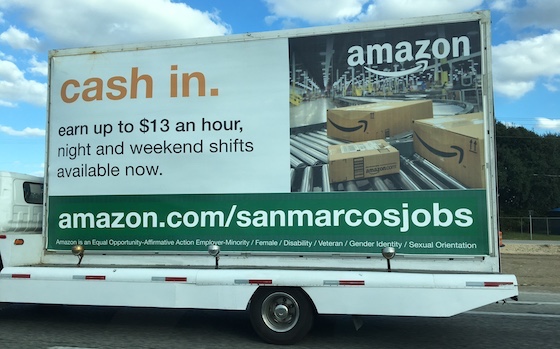
Most people know of the static billboards along the sides of roads, but you have probably also seen the mobile billboards that are mounted on trucks and drive around all day. The business model is attractive to some investors because of the low cost of these trucks on the used markets, but there are some real issues you need to be aware of before you even think about getting into the mobile billboard sector.
Limited reach
When a mobile billboard drives down the road, who really sees it? The few cars behind it and beside it. But they don’t really change as the cars are all travelling together at the same speed. So the actual reach of the sign is hugely limited. In the course of a day, a fraction of a standard billboard audience would be reached. Even if you drive endlessly around downtown in search of pedestrians, you only will get them during lunch hour and the end of the day – the rest of the time they are in their offices. So high numbers of people reached is not going to happen.
Expensive to operate – but with a twist
Regular billboards along the highway have very low operating costs. They just sit there. But mobile billboards require a lot of gasoline. And a driver. And insurance. And repair and maintenance. Basically, they have a lot of expenses. So the typical mobile billboard has much more operating cost than a traditional sign. Except for one big item: ground rent. Since you are driving the sign on the public right-of-way, you don’t have to pay any ground rent to a property owner, so that saves you the roughly 20% or so of revenue.
Work best as static units
What really happens with mobile billboards is that people do not use them effectively. They actually work best in a static format – the same as regular billboards. The key ingredient is that a mobile billboard is able to go where a standard billboard cannot: cities that don’t allow billboards or locations that are illegal for normal signs. Since it’s not tied down to the property, it can literally be parked in a location and moved at the drop of a hat. This exclusivity of locations is what makes the mobile billboard a successful business model.
Positioning is key
Once you understand that the power of the mobile billboard is to go where other signs are banned – to basically circumvent the standard permitting system for signs – then you have harnessed the power of this sector. And since rarity is key, go where signs are absolutely never allowed traditionally. If it’s Los Angeles, think Rodeo Drive. Go where just the name is a draw for advertisers. You need to figure out where you can position and park that mobile billboard for maximum visibility.
Quality vs. quantity
Since exclusivity is the goal, the end product is a very high-quality viewing audience vs. just high quantity. Any old billboard on the Interstate in Los Angeles can reach 200,000+ viewers per day. But some advertisers would rather reach 1,000 wealthy people on Rodeo Drive instead (for example high-end homes, high-end cars, jewelry and fashion labels).
Other thoughts
The legality of mobile billboards has been disputed for decades. Most cities hate them and would like to legislate them out of existence, but can’t figure out a way. That being said, make sure that you know the laws in the areas in which you are thinking of placing mobile billboards. While most states have no laws regarding them – as they don’t really fall clearly under the federal Highway Beautification Act – you need to make sure that you can operate in conformance with local regulations. A big fine is not going to work as a cost of doing business.
Conclusion
Mobile billboards are a part of the greater out-of-home advertising universe. They offer low cost of entry (you can buy them used from around $2,000) and a huge variety of applications. You just have to understand that the point is not just to drive them around.
Using Billboards As An Art Forum
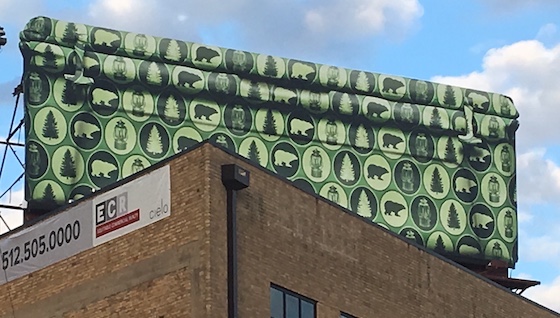
So you have a vacant billboard that’s not moving. You have some advertisers looking at it, but nobody is knocking down your door to sign up. What else can you do with the ad space in the interim? Using a billboard as a public forum for artwork is one possible concept.
Good chance for publicity
Of course, the primary goal of using a billboard to display art is to create publicity and exposure for the sign and your company. And that it typically succeeds in. If you contact five media outlets (television and newspaper) one of them is likely to pick up the story. Publicity is never a bad thing for you as the sign owner, as it gets people thinking about the power of billboards.
Choose your subject matter carefully
It is very important that you go about this the correct way. You need to first figure out the theme of the artwork. One of the best is to have a contest at a local college or even high school of a certain positive message, and then display the winning submission. Make sure that whatever you put up there has no nudity, political messages, or anything else that some group will find offensive (remember that in today’s America, somebody can take offense to almost anything). Themes such as “don’t drive drunk” and “stop bullying in American schools” – concepts that nobody could find offensive – are best.
But use sparingly
If you’re going to go this route with your vacant sign, then you should never display it for more than a month. It’s simply an interim step between paying advertisers. It’s never an end goal, and you should want to replace it with a paying advertiser as fast as you humanly can.
And your property owner will not be impressed if it’s a percentage lease
Don’t expect a pat on the back from the land owner where your sign is located, because if they get paid on a percentage lease basis you are basically giving them nothing for that ad. That’s why you have to make sure that there’s nothing offensive in the content, or you will burn a bridge with the property owner that will be hard to mend. They depend on you to rent the ad space, not give it away.
Conclusion
Fine art on billboards is not a new idea. It’s a great idea to get publicity and is definitely better than a vacant sign. However, use it sparingly and keep pushing to get a paying tenant up there.
The Impact Of Logo Signs On The Billboard Industry
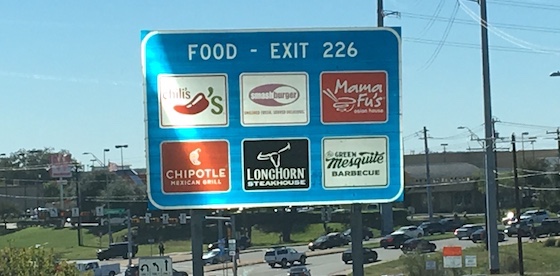
We’ve all seen those blue signs on the highway right-of-way that have a bunch of logos showing you what different gas stations, restaurants, hotels and points of interest there are at that exit. This program is called the “logo sign” program, and came into effect in the 1990s. And it changed the way outdoor works along the nation’s highways.
Permanently changed the perception of positioning
Prior to the invention of the Logo Sign program, all advertisers fought for the billboard located closest to their exit, so they could proclaim “exit now”. But with the advent of the Logo Signs, the perception all changed. Suddenly, advertisers no longer sought the sign closest to their exit, but instead one that was about three miles back, so the customer has enough time to think about buying that hamburger or stopping for the night, and then the Logo Sign closes the sale. So the advertiser of today is using the Logo Sign as a 1 – 2 punch, with the billboard giving the reasons to stop (McDonalds might show their value menu) and then letting the Logo Sign exit the traffic off.
Actually attracted more clients instead of eliminating them
The surprising end result of the Logo Sign program is that it actually has created more billboard demand. While many feared that it would reduce demand for billboards as you can just get your logo up there for $50 per month, so why would you need a billboard? The truth is that you have to do more salesmanship than just a logo, and a billboard is that giant salesman. But the Logo Sign program has brought many new advertisers into the market as they rent the Logo and then decide they need more. It’s like a low cost product that gets advertisers familiar with outdoor advertising and then grooms them to rent a real billboard.
Conclusion
The Logo Sign program has been good for the American billboard industry, contrary to what people thought would happen when it first began. It will continue to create fresh new demand for billboards throughout the U.S.
Is This An Opportunity?
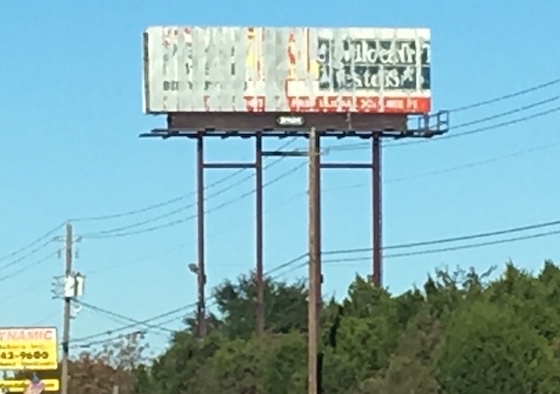
So you’re driving down the highway and you see a long-vacant sign in real dilapidated condition. Most people wouldn’t think twice about it, but a professional billboard investor sees opportunity. Or at least what might be an opportunity to make money. So how can you tell?
What’s the background story?
The first step is to get the full story of how the sign came to be built as well as abandoned. These stories are very important in trying to cobble together who actually owns the structure and what happened to make the prior sign owner walk away from their investment. The typical story is either that the sign company and property owner couldn’t agree on the ground rent when the lease came up and the sign company ran off, or that there was an obstruction or some other problem that came up over time, and the sign owner ran off because they could not rent the ad space.
Is it legal to operate?
A key starting point on any consideration of taking over an abandoned sign is if it is legal to do so. In some markets, there is no renewal of the initial permit for the sign. You build the sign and the permit runs for the life of the structure. In other areas, you have an annual sign renewal permit. Then, on top of that, is the question of whether or not the property owner has been renewing it or, in some bizarre occasions, the old sign owner doing so. An illegal sign is typically a bad investment, as it has a limited life, you can’t sell it, and you might get fined.
Can you get arguable possession of it?
In these cases of abandoned signs, there is typically a pretty grey area over who actually owns the sign structure at this point. Typically, the most logical conclusion is that the property owner is the current owner due to abandonment laws. In addition, in some cases the old owner gave it to the property owner when they left. But you need to have a legitimate argument of why the property owner is the owner of the sign structure. If the property owner is not the arguable owner, then you need to contact whoever it is and see if they would sell the sign structure to you. In one case, I was able to buy a $40,000 steel monopole for $1 from the sign owner because he was afraid that the property owner was going to sue him for back rent.
Is the landowner willing for it to be used again?
Another key issue you need to figure out is if the property owner is willing to sign a new lease to allow you to bring the sign back to life. You would think that any sane person would, but I had one occasion where the land owner would not let me bring the abandoned sign back to life unless I agreed to pay him back all the old rent with interest – like a couple decades worth. It made absolutely no sense. In other cases, the sign owner simply won’t sign a new lease with reasonable terms, and seals his fate to let it sit abandoned forever.
Is there the demand to rent it out?
In cases where the sign was abandoned as a result of blockage, the question is if you can do any better a job at renting the ad space than the old sign owner did who ran off. If the sign is blocked, you should approach whatever is blocking it and see if it can now be fixed. Sometimes, over time, the blockage that seemed impossible to address can now be solved (maybe the neighbor who would not cut down his tree has died and his heirs could care less, for example). In other cases, the location has matured over time and what was a rural sign with weak demand is now a highly sought after billboard.
Is it safe?
One final issue is whether or not the sign is safe to be used again. You can accomplish this by paying a sign fabricator to look for welds breaking or visual signs that it is in peril. And you may need to add catwalks or wires to make it conform to OSHA regulations for safety. In a litigious world, you need to cover your bases on these topics.
Conclusion
Abandoned signs can prove to be highly profitable if you know how to harness that power. You should see money where others see hopelessness. And abandoned signs can be found nearly everywhere – if you only watch for them.
The Challenges Of Stacked Billboards
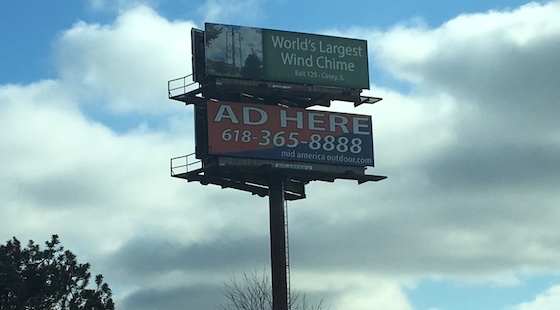
Stacked signs are just that – one ad above another on a single support column or columns. You don’t find these in all markets, but they are common in others. So what do you need to know about stacked signs?
Reduced number of advertisers will “share”
The first key problem is finding advertisers that will share the structure with another company. Sometimes it almost becomes like chess in figuring out who fits with who. For example, if you put a funeral home on one fact, you can kiss goodbye a restaurant. If you put a Ford dealer on one face, then you can’t put a personal injury lawyer on the other. When you have a normal sign, you don’t have to worry about such things.
Who gets which face?
And when you find an advertiser, they may still be unhappy having the lower face. Nobody wants it. They all want to be on top. It’s an endless problem because every tenant on the lower face will move to another sign where they can be on the top side. So there is always this tension.
Casting shadows both in day and night
One of the biggest complaints about stacked signs is that that one ad casts a shadow on the other, based on whether it’s day or night. During the day, the upper ad’s catwalk and light fixtures cast the shadow on the lower. And at night, the lower ad’s lights cast a shadow on the upper. There’s no way to fix this – it’s just a reality.
But it’s a good way to make a much higher net income
But despite these problems, sign owners keep building more stacked units. Why? Because they are packing on double the revenue on a single pole or poles. So it’s hard not to be attracted to stacked units from only a financial perspective. The slight increase in construction cost to build two additional faces is easily offset by the higher revenue.
Conclusion
Stacked signs are a reality in many markets and, despite their limitations, they are good creators of net income. You just need to know the facts before you jump into building or buying one.
Beware Of Cute “Space Available” Messages
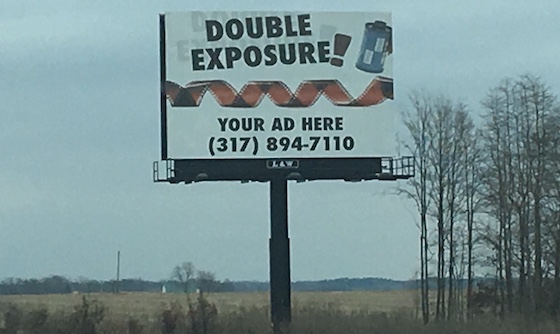
When you have a vacant billboard, it’s always a great idea to use the sign to advertise that fact. Many long-term clients came in the door based on calling from the phone number on a vacant sign. However, there’s a right and wrong way to do this. And cute messages have been a failure for decades. Here’s what works in advertising the fact that a vacant billboard is available.
Color choice
It’s a long-standing rule that the eye seeks out the opposite of the color palate that it sees. The opposite of green is red. So when you have a billboard set among the trees, the logical color choice is clearly red. You should use a bright red background, and then white lettering to maximize contrast. That part is a given.
Use size to your advantage
Some sign owners blow this part by using small numbers down in the corner. You want to use GIANT number for the phone number. Your phone number should max out the entire sign face – why hold back? The bigger the number, the bigger you will make an impression on a prospective advertiser.
A few simple words
Don’t get fancy here. “Rent This Sign” tells it like it is, and there’s no mistake about what the phone number applies to. Cute copy that says things like “Gotcha” or “Caught You Looking” is completely ineffective and confuses potential advertisers as to what’s going on.
But don’t leave it up for too long
You typically don’t want to leave a “Rent This Sign” ad for very long, as it makes the sign look undesirable. If you don’t get an advertiser calling in 60 days, give up and try a different approach and put another ad up until you find the one you want. That’s where having a quantity of “pre-emptible” ads comes in handy, which allow you to put up an advertiser at 50% of normal rate while you still try to find a full-price advertiser.
Conclusion
Billboards make excellent salesmen for themselves when you give them the chance. Make those ads big, colorful and to the point. Cute ads may sell kittens, but not billboard space.
The Market Report
Prices Are Delayed By At Least 15 Minutes
